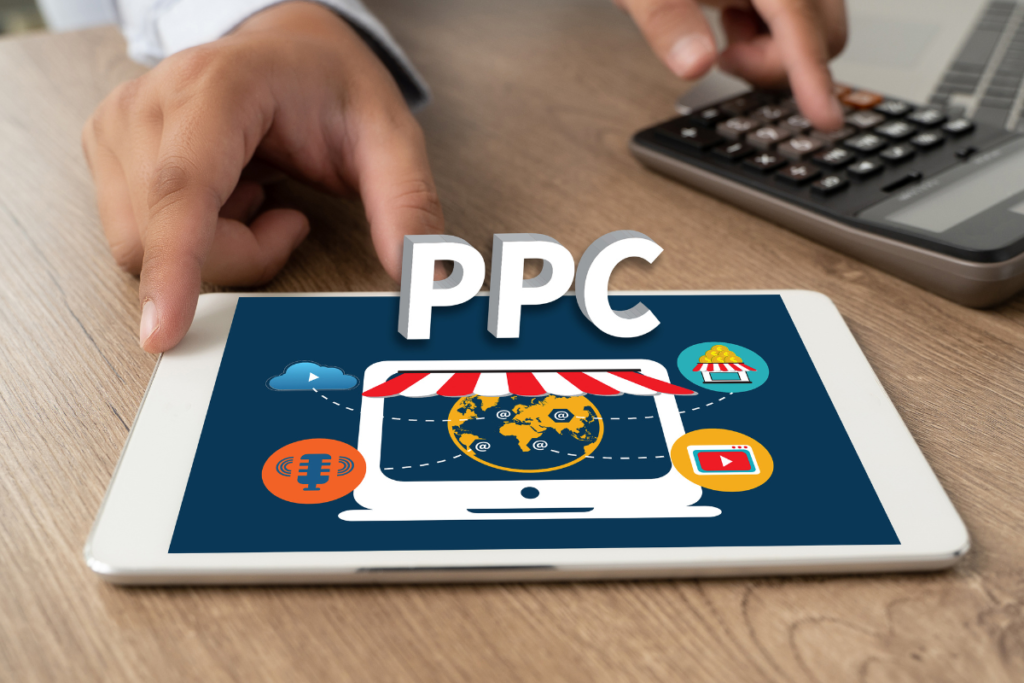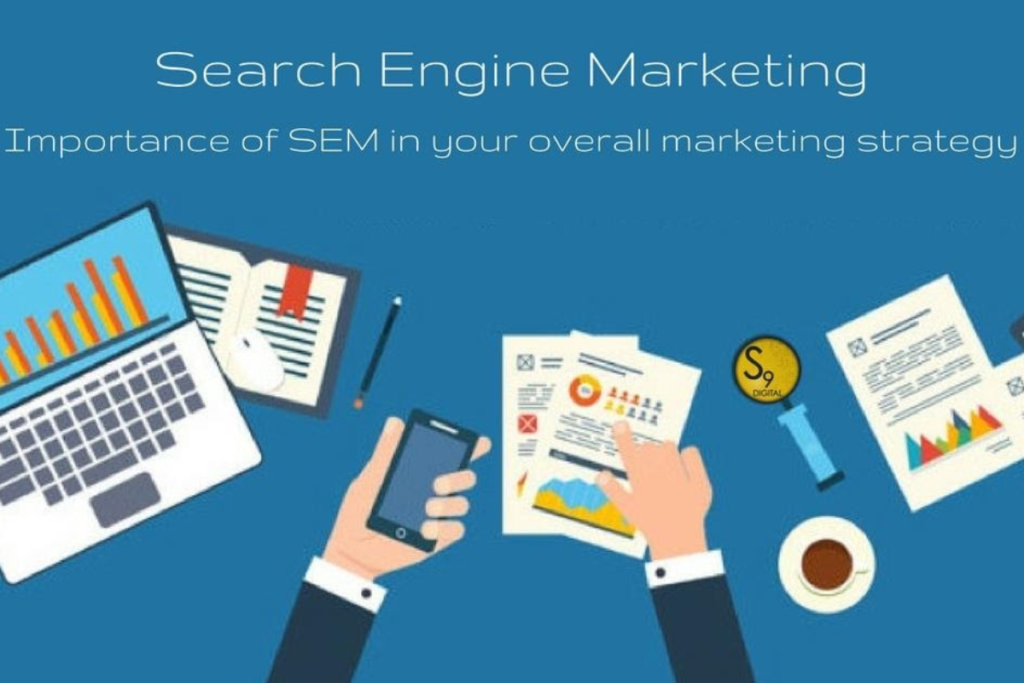Search Engine Marketing (SEM) has become an essential component of any effective online marketing plan in today’s digital age. Meaning of SEM refers to the practice of utilising paid advertisements to increase a website’s visibility on search engine results pages (SERPs). By targeting specific keywords and optimising ad campaigns, businesses can effectively reach their target audience and drive relevant traffic to their websites.
The importance of SEM cannot be overstated. With billions of searches being conducted on search engines every day, having a strong presence in the SERPs is essential for businesses looking to stand out from the competition. By investing in exploring or learning Meaning of SEM, companies can ensure that their products or services are displayed prominently when potential customers are actively searching for them.
Furthermore, comprehending Meaning of SEM provides businesses with valuable insights into consumer behaviour and preferences. Through data analysis and tracking tools, marketers can gain a deeper understanding of which keywords and ads are driving the most conversions and adjust their strategies accordingly. This level of precision allows for more efficient budget allocation and better overall campaign performance.
Meaning of SEM (Search Engine Marketing)
Meaning of SEM, or Search Engine Marketing, refers to the practice of promoting a website or web page through paid advertising on search engines. It involves various techniques and strategies to increase visibility and drive targeted traffic to a website.
In simpler terms, SEM is the process of utilising search engines like Google, Bing, or Yahoo to reach potential customers and increase online visibility. By bidding on relevant keywords and creating compelling ad campaigns, businesses can ensure that their website appears prominently in search engine results when users search for specific products or services.

SEM encompasses both paid search advertising (PPC) and organic search engine optimization (SEO). While SEO focuses on optimising a website’s content and structure to improve its ranking in organic search results, Meaning of SEM specifically emphasises paid advertisements that appear alongside those organic results.
The primary goal of SEM is to drive qualified traffic to a website, ultimately leading to conversions such as sales, sign-ups, or inquiries. It allows businesses to target specific demographics or geographic locations and measure the effectiveness of their marketing efforts through detailed analytics.In today’s digital landscape where competition for online visibility is fierce, understanding theMeaning of SEM and leveraging its power can significantly impact a business’s success by reaching the right audience at the right time with compelling advertisements.
Key Elements included in SEM
When it comes to Search Engine Marketing (SEM), there are various types that businesses can utilize to improve their online visibility and drive traffic to their websites. Let’s explore the different types of SEM and understand the meaning behind each keyword.
- Pay-Per-Click (Paid advertising): Pay-Per-Click, commonly known as PPC, is also known through Meaning of SEM where advertisers pay a fee each time their ad is clicked. This form of advertising allows businesses to display their ads prominently on search engine results pages (SERPs) or other websites, targeting specific keywords or demographics. By bidding on relevant keywords, businesses can ensure that their ads appear when users search for related terms, increasing the chances of attracting potential customers.

- Local SEO: Local SEO focuses on optimizing a website’s visibility in local search results. It involves optimizing website content, meta tags, and online directories to target location-specific keywords. Local SEO is crucial for businesses that operate in specific geographic areas or have physical storefronts. By optimizing for local search queries, businesses can increase their chances of appearing in Google’s “Local Pack” or map listings when users search for products or services in their vicinity.
- Organic SEO: Organic SEO refers to the process of improving a website’s visibility in organic (non-paid) search engine results pages through various optimization techniques. This includes optimizing website content, meta tags, backlinks, and technical aspects like site speed and mobile-friendliness. The goal of organic SEO is to increase a website’s ranking on SERPs naturally over time by providing valuable content and satisfying user intent.
- Keyword Research: Conducting keyword research is crucial for both SEO and PPC. This involves identifying relevant keywords and phrases that potential customers are likely to use when searching for products, services, or information related to your business.
Ad Copywriting: For PPC campaigns, creating compelling and relevant ad copy is essential. Advertisers need to craft engaging headlines and descriptions that encourage users to click on their ads.
Landing Page Optimization: When users click on a PPC ad, they are directed to a landing page on the advertiser’s website. Optimising these landing pages to match the ad’s intent and provide a seamless user experience is vital for converting clicks into actions, such as making a purchase or filling out a contact form.
Quality Score Management: In PPC advertising, platforms like Google Ads assign a Quality Score to each keyword and ad. This score is based on factors like ad relevance, click-through rate, and the quality of the landing page. A higher Quality Score can lead to cheaper ad expenses and more effective ad placement.
Bid Management: Advertisers must set and manage their bids for keywords in PPC campaigns. Effective bid management helps control costs and ensures that ads appear in desirable positions on the search results page.
Ad Extensions: Ad extensions are a critical component of Search Engine Marketing (SEM) and Pay-Per-Click (PPC) advertising. They offer advertisers the opportunity to enhance their ads with additional information, making them more appealing and informative to users. Ad extensions not only improve ad visibility but also help in driving better click-through rates and ultimately lead to higher conversions.
Tracking and Analytics: SEM campaigns rely heavily on data analysis. Using tools like Google Analytics, advertisers can track the performance of their SEM efforts, monitor key metrics such as click-through rates and conversion rates, and make data-driven optimizations.
A/B Testing: Continuous testing and experimentation are essential in understanding the Meaning of SEM. A/B testing involves creating multiple versions of ads or landing pages to determine which ones perform better, allowing advertisers to refine their strategies over time.
Content Marketing: Content creation and distribution, such as blog posts, videos, and infographics, can support both SEO and SEM efforts by providing valuable information to users and attracting organic traffic.
Businesses may design comprehensive strategies that integrate paid advertising with local and organic SEO efforts to maximise their online visibility and generate targeted visitors to their websites by knowing these distinct types of SEM and their respective meanings.
Why SEM is Important while grasp the Meaning of SEM
SEM’s purpose is to increase a website’s visibility through sponsored search, contextual advertising, and organic search engine results. Meaning of SEM is the practice of utilising search engines to promote and market products or services through paid advertising. It is an essential tool for businesses looking to increase their online visibility, drive targeted traffic to their websites, and ultimately boost conversions and revenue.

Ultimately, SEM plays a pivotal role in helping businesses achieve their marketing objectives by increasing brand visibility, driving targeted traffic, and maximizing conversions. In an increasingly competitive digital landscape, harnessing the power and Meaning of SEM is no longer an option but a necessity for organizations looking to thrive online. The importance of SEM cannot be overstated.
✅ Here are a few key reasons why it is vital for businesses:
👉 Increased Online Visibility: With SEM or knowing the Meaning of SEM, businesses can ensure that their website appears prominently in search engine results pages (SERPs). By targeting relevant keywords and optimizing ad campaigns, businesses can significantly increase their online visibility and reach potential customers who are actively searching for products or services similar to theirs.
👉 Targeted Advertising: Recognizing the Meaning of SEM allows businesses to target specific demographics, locations, interests, and even device preferences when running ad campaigns. This level of targeting ensures that your ads are shown to the right audience at the right time, maximising the chances of driving qualified traffic and generating valuable leads.
👉 Cost-Effective Results: Unlike traditional forms of advertising that often require substantial upfront investments with uncertain returns, SEM offers a cost-effective approach with measurable results. With pay-per-click (PPC) advertising models, businesses only pay when users click on their ads. This means you’re only spending money on actual engagement with your brand.
👉 Immediate Impact: One of the most significant advantages of SEM is its ability to deliver immediate results. Unlike organic search engine optimization (SEO), which takes time to build momentum, SEM allows businesses to appear at the top of search engine results almost instantly after launching a campaign. This immediacy can be especially beneficial for new product launches or time-sensitive promotions.
👉 Data-Driven Insights: Another compelling aspect Meaning of SEM is its ability to provide valuable data and insights into consumer behavior and campaign performance. Through analytics tools provided by platforms like Google Ads, businesses can gain deep insights into ad impressions, click-through rates, conversion rates, and more.
Types of Bid Strategies to understanding the Meaning of SEM
When it comes to running successful SEM campaigns, bid strategies play a crucial role in optimizing your advertising budget and achieving your campaign objectives. In this section, we will explore the different types of bid strategies available to advertisers.

Target CPA (cost per acquisition)
This bid strategy focuses on driving conversions at a specific target cost per acquisition. By setting a desired CPA, the system automatically adjusts your bids to maximize conversions while staying within your designated cost threshold.
Target ROAS (return on ad spend)
This bid strategy is geared towards maximizing the return on your ad spend. By specifying a target ROAS percentage, the system optimizes bids to generate as much revenue as possible based on the set return metric.
Maximize clicks
With this bid strategy, the focus is on driving maximum traffic to your website within a given budget. The system automatically sets bids to get as many clicks as possible while staying within your allocated budget.
Maximize conversion value
This bid strategy is particularly useful for e-commerce businesses looking to maximize their overall revenue from online sales. It automatically sets bids to optimize for higher-value conversions rather than just focusing on volume.
Target impression share
With this bid strategy, you can specify a desired impression share percentage that you want for your ads in relation to eligible auctions. The system then adjusts bids to help achieve that target impression share.
By knowing the many types of SEM bid strategies and their unique aims, advertisers can make informed judgments and select the best method based on their campaign objectives and budget limits.
Conclusion
Meaning of SEM is a crucial online marketing strategy that uses paid advertisements to boost a website’s visibility on search engine results pages. It involves targeting specific keywords and optimizing ad campaigns to reach the target audience and drive relevant traffic. SEM includes both paid search advertising (PPC) and organic search engine optimization (SEO), with SEM focusing on paid advertisements alongside organic results.

It aims to drive qualified traffic to a website, leading to conversions like sales, sign-ups, or inquiries. SEM can be divided into various types, such as Pay-Per-Click (PPC), Local SEO, Organic SEO, Keyword Research, Ad Copywriting, Landing Page Optimization, Quality Score Management, Bid Management, Ad Extensions, Tracking and Analytics, A/B Testing, Mobile Optimization, and Content Marketing. Understanding these strategies helps businesses maximize their online presence and attract targeted traffic.
